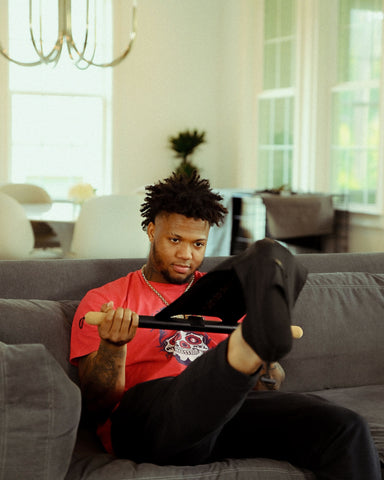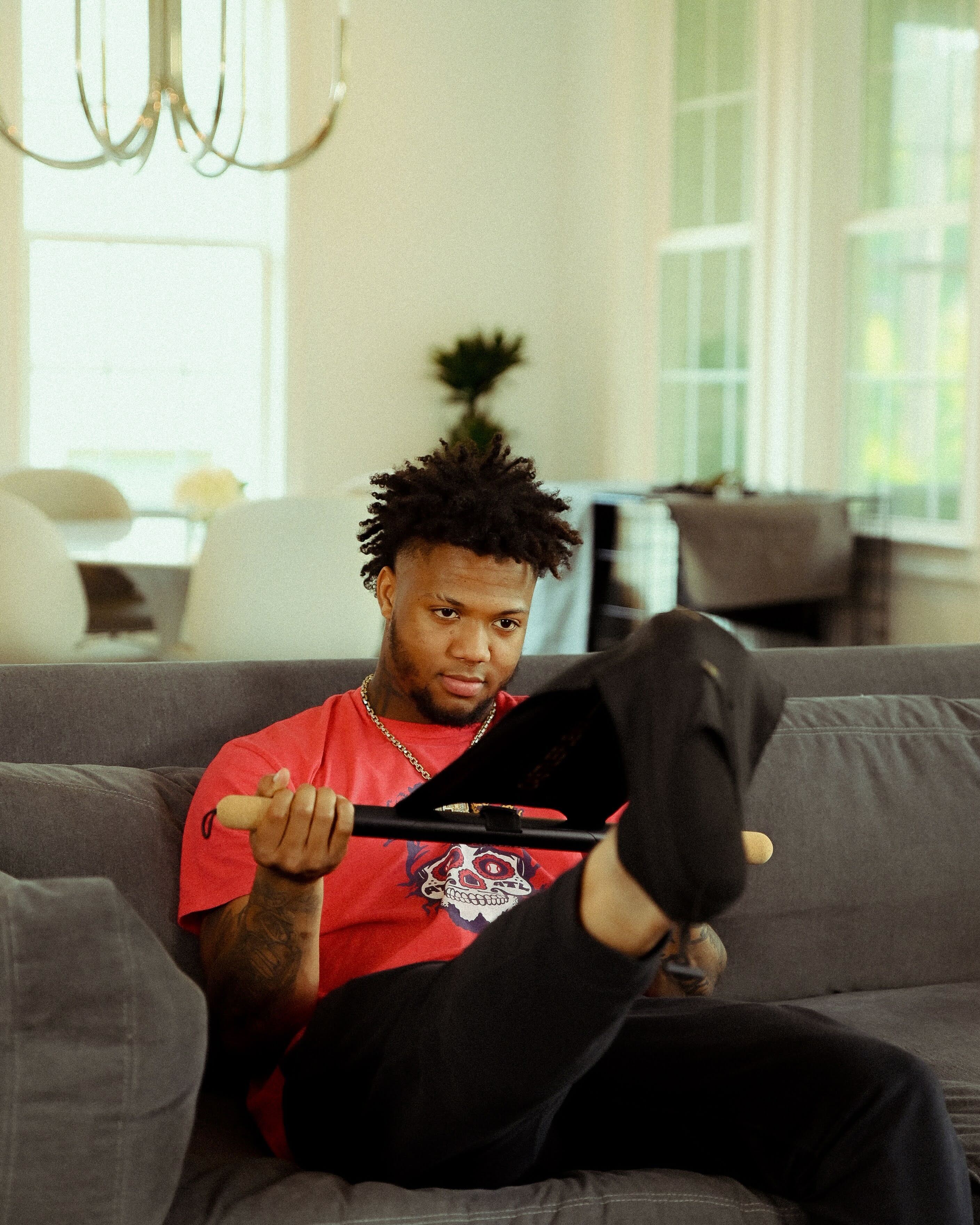Contents (Jump to a section)
Can Tight Calves Cause Knee Pain?

Can tight calves cause knee pain? If you suffer from anterior knee pain, tight calves are most likely the cause.
Tight calves and knee pain are intertwined, the same as tight hips and low back pain. Therefore, addressing the cause of tightness in the calves is the only way to achieve optimal relief from nagging knee pain.
This article discusses how to address knee pain from tight calves by pinpointing the cause. We also will go over the best methods of relieving tension in the calves for knee pain relief!
Can Tight Calves Cause Knee Pain?
So, can tight calves cause knee pain? The answer is yes. The calves and knees are interconnected, but to truly understand the relationship between the two, continue reading below for more information on how to address tight calves causing knee pain!
The Relationship Between Knee Pain From Tight Calves
Regarding anterior knee pain, tight calves are most commonly the cause. However, to understand the correlation between tight calves and knee pain, you must first understand how these two connect.
Two muscles make up the calf, the gastrocnemius, and the soleus. The soleus muscle begins below the knee at the back of the shin bone and attaches to the heel bone, merging with the Achilles tendon. The gastrocnemius is the larger calf muscle, with two heads attached to the femur above the knee that run to the Achilles tendon.
When the calf muscles are tight, it limits ankle mobility and inhibits knee flexion. This causes the tendon to strain, presenting pain behind the knee, or localized in the knee area, due to the excessive tension in the calf muscles.
What Caused Your Tight Calves in the First Place?
If you have anterior knee pain, tight calves are prone to be the cause. To address this issue, you must first pinpoint the cause of the tightness in the calves to address the problem and eliminate pain and discomfort adequately.
There are various causes for tight calves, including extended periods of standing and lack of a proper warm-up. But that’s not all!
Other reasons why your calves may be tight:
- Overuse
- Underuse
- Poor exercise form/technique
- Lack of warming up pre-exercise
- Lack of cooling down post-exercise
- Prolong periods of sitting
- Wearing heels
- Poor ankle mobility
- Poor hip mobility
- Mild injury (ex. deep vein thrombosis)
Taking time to learn how to release tight calves, increase hip mobility, increase ankle mobility, and fix a tight hamstring can do wonders in ridding knee pain from tight calves and other muscular imbalances. In addition, the energy put into addressing imbalances, tension, and inflammation in the body can do wonders in healing pain and preventing injuries.
How to Address Tight Calves and Knee Pain to Find Relief Fast
You need to find relief fast to address tight calves causing knee pain by reducing tension and inflammation that cause pain and discomfort. Below, we provide the best ways to relieve tightness in the calves and reduce knee pain!
Address the Root Cause of Calve Tightness
To avoid implementing a short-lived strategy, you must address the root cause of calf tightness. Then, you must fix anything agitating the calves by implementing lifestyle changes to get the best results. For example, practice good form and technique while exercising to prevent any muscular imbalances or excess strain that can increase the likelihood of tension or injury.
Tight calves and knee pain can come from overuse and underuse of the muscles. Exercise is vital for good health and should not be removed from a person’s weekly routine. Add in pre-workout dynamic stretches to warm up the muscles and post-workout cool-down static stretches to reduce tension and inflammation.
If you have mobility or flexibility issues, these can add strain onto the muscles and joints, causing pain. Incorporate stretching consistently into your routine.
But how long does it take to get flexible?
It takes time, perseverance, patience, and consistency to see results. With mobility and flexibility training, it can take weeks to see notable progress. So keep at it to reduce tightness in the calves to reduce knee pain effectively!
Start With Deep Tissue Work
Deep tissue work targets the muscles and fascia to relieve tension and reduce inflammation by improving circulation and blood flow throughout the body. There are different ways to apply deep tissue work, including deep tissue massages, lacrosse balls, foam rollers, and Theraguns.
You can apply deep tissue work to target tight calves and other muscles to speed up recovery while reducing knee pain, joint pain, inflammation, and muscle stiffness.
Strategic Stretching
You need to execute strategic stretching into your routine for the best results. Use fascial stretch therapy, a form of assisted stretching, to promote deeper stretching to target the muscles and fascia for the utmost progress.
But what is fascial stretch therapy and assisted stretching?
Fascial stretch therapy is a form of table-based assisted stretching that specifically targets the fascia and the joint capsules. The fascia and joint capsules are responsible for providing structure to the body. When they are stiff, it can result in inflammation, discomfort, and pain, increasing the risk of injury.
Assisted stretching is a type of stretching that utilizes the help of another person to achieve deeper stretches and broader ranges of movement. The benefits of assisted stretching are outstanding, helping to address tightness, inflammation, mobility, and flexibility issues.
And with CastleFlexx’s flexibility equipment, you can grasp the benefits of fascial stretch therapy and assisted stretching without the assistance of another person. This high-quality stretching tool provides universal access to full-body stretching wherever and whenever you need to stretch out tight calves, hamstrings, quads--you name it!
Other Solutions
Use heat therapy (thermotherapy) and cold therapy (cryotherapy) to help reduce inflammation, relieve tightness in the calves, and ease knee pain.
Cryotherapy is effective in reducing inflammation, pain, and swelling. Once inflammation and pain have been reduced, use thermotherapy to open up the blood vessels and improve circulation to reduce muscle tension and soreness and help speed up the healing process.
Final Thoughts on Tight Calves Knee Pain
Can tight calves cause knee pain? They can!
Tight calves are correlated with knee pain as the two are interconnected. The tendon strains when the calves are tight, resulting in knee pain. Throughout this article, we discussed various reasons why the calves become tight and the best methods to address tightness in the calves to achieve knee pain relief. CastleFlexx’s flexibility equipment provides access to assisted stretching and fascial stretch therapy for deeper stretches and broader ranges of movement to target the muscles, fascia, and joint capsules successfully. With this powerful, versatile tool, you can achieve the best results out of your stretching, relieving tightness in the calves for desired knee pain relief.
Buy CastleFlexx’s flexibility equipment to relieve knee pain from tight calves today!
